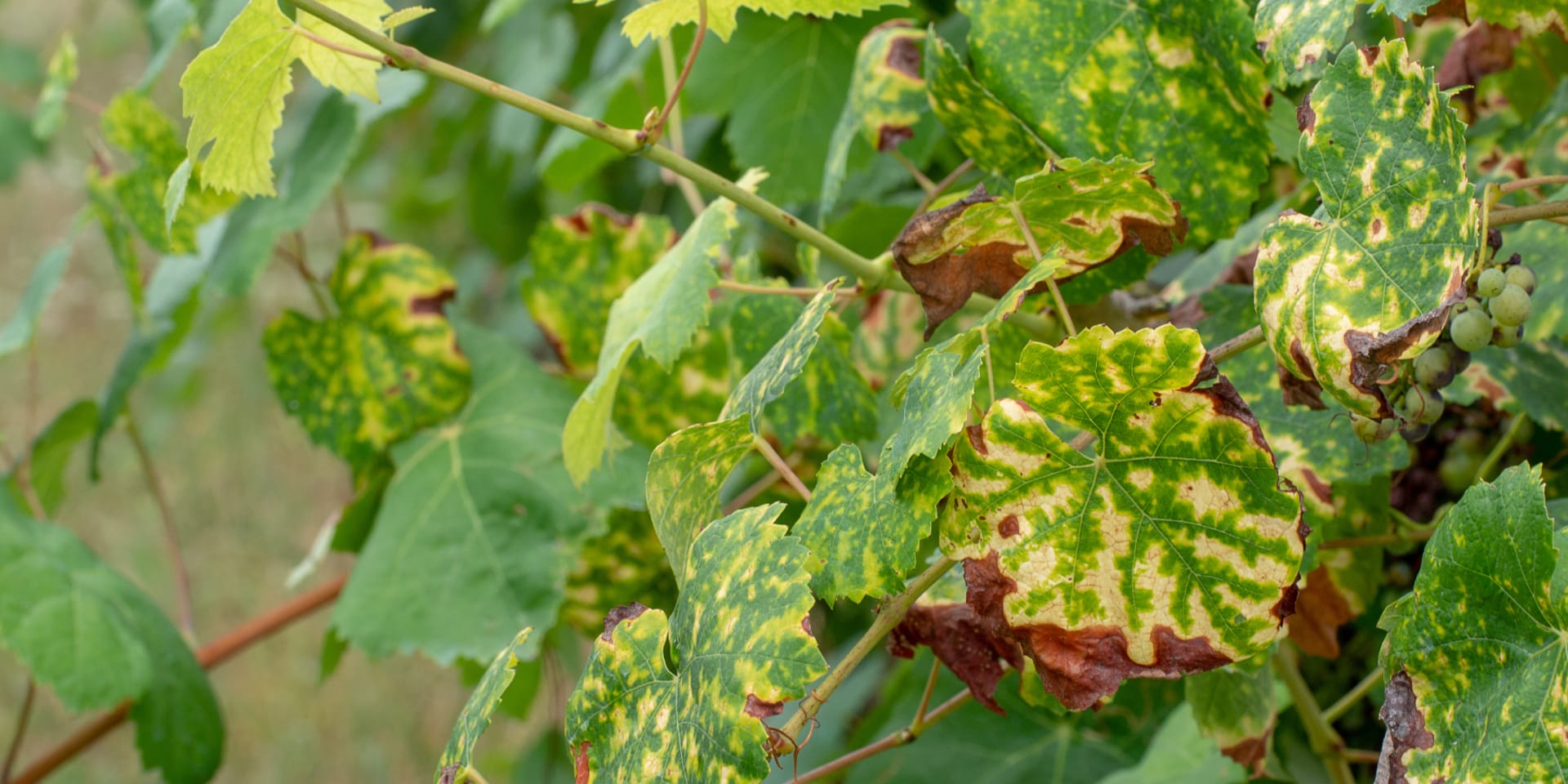How to recognise and treat grapevine virosis
Grapevine virosis was first 'diagnosed' in France during the 19th century. However, it was not until the 1960s that the disease began to be discussed in Italy. It is a disease that affects grapevines, and which requires preventive measures to be taken. Although its incidence is very high, and the resulting damage can affect as much as half the harvest, there is no cure for virosis to date. The only way to 'fight' it is to prevent it and treat the vectors.
Primarily, vine virosis is transmitted via three vectors: plants (infected plant material), animals (mealybugs and nematodes), and cutting equipment used on diseased plants. Careful attention must therefore be paid to these aspects.
Symptoms of grapevine virosis
In addition to the encouragement of the leaves, and the changing colour, other symptoms of grapevine virosis are:
- the accentuation of asymmetry, toothing and indentation of the leaves;
- flattening or irregularity of the internodes;
- poor fruit setting (initial phase of fruit development, immediately after flowering);
If, on the other hand, symptoms occur in spring, disappear in summer, and consist of reddish or yellowish patches on the lamina, we speak of yellow mosaic.
To verify that the vine is indeed affected by virosis, therefore, it is necessary to collect a sample and carry out a thorough molecular and serological test.
Remedies against grapevine virosis
Mealybugs can move autonomously, travel for kilometres suspended in light air, or migrate as a result of pruning operations. Therefore, defending oneself against mealybugs is the first step in protecting the vine from virosis (perhaps by seeking the advice of the Phytosanitary Services in one's area). Conversely, it is a good idea not to hinder the spread of the direct enemies of mealybugs: bugs, mealybugs, phytoseids and parasitoids.
However, the virus can also be spread by nematodes (also called 'roundworms'): the longer species have a pointed stylet with which they feed on the roots of vines. The virus, inside them, can live up to several years. This is why it can be transmitted from one plant to another. The most effective system to prevent it, is to be put in place at the creation of new plantings: at that time, a chemical analysis of the soil must be carried out to decide which strategies must be implemented based on its characteristics. Or rooted cuttings can be used, which, coming from nurseries that guarantee sanitary treatment, are harmless. If a plant is affected by nematodes, it is essential to uproot it, taking care to completely eliminate the roots and till the soil in order to prevent virosis.
To prevent vine virosis, therefore, one must first check that the rooted cuttings are healthy and that propagation tools that are not infected are used.
Treating grapevine virosis in organic farming
To treat vine virosis, the use of green manure with Brassicaceae has recently become widespread in organic farming. This practice consists of sowing cruciferous plants as intercrops: not intended for harvesting or consumption, these plants bring significant improvements to the soil. Their roots, which are long and taprooted, penetrate the soil and have a draining effect.
The best time to green manure is in spring or autumn: Brassicaceae are not afraid of cold weather and, at full flowering, can provide the soil with high amounts of biomass, with a carbon/nitrogen ratio similar to that of humus. By attracting nematodes to the roots, they attack them by releasing isothiocyanates (which stop their development). Not only does this fight nematodes, but it also fertilises the soil and eliminates pests, helping the soil itself to regain its ability to produce crops according to organic doctrine.
Against mealybugs, plant oils (mint, pine or caraway oil) or fern or nettle macerate can be used instead of chemical insecticides, which can be applied throughout the year once the plant has been cleaned.


 China
China
 France
France
 United Kingdom
United Kingdom





